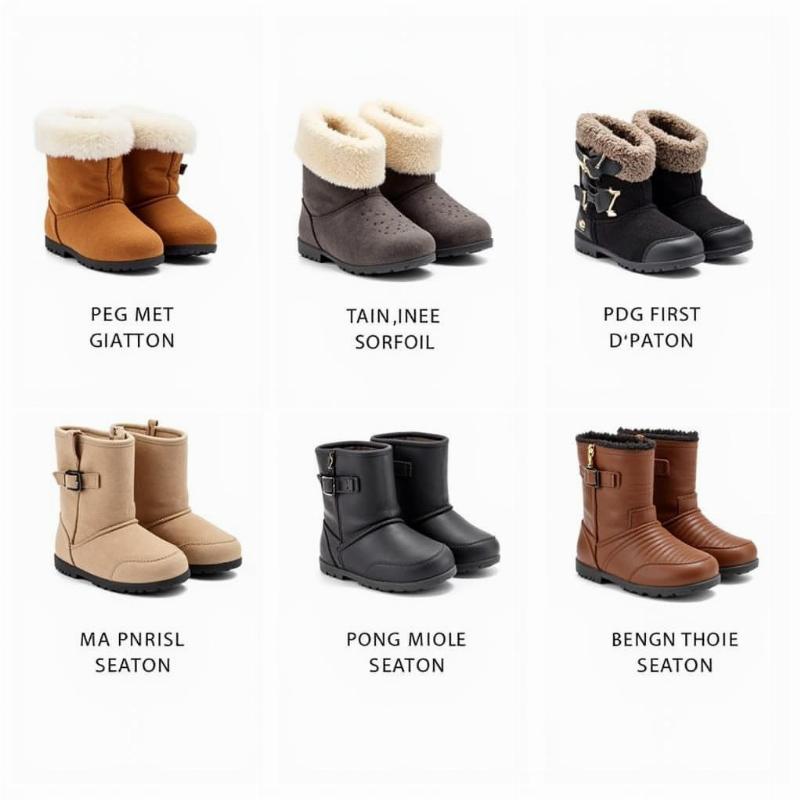Paw injuries are a common occurrence in our canine companions, especially for active dogs who love to explore. A wound recovery boot for dogs can be a lifesaver in these situations, providing protection and support for a quicker recovery. Whether it’s a cut, scrape, or post-surgical incision, knowing how to choose and use a recovery boot is essential for every dog owner. Let’s dive into everything you need to know about these helpful devices.
Understanding the Benefits of Wound Recovery Boots for Dogs
Wound recovery boots act like a mini cast for your dog’s paw, shielding it from environmental contaminants, excessive licking, and further trauma. They offer several crucial benefits:
- Protection: Boots provide a barrier against dirt, debris, and bacteria, reducing the risk of infection.
- Comfort: They cushion the injured area, minimizing pain and discomfort during movement.
- Stability: The boot provides support to injured joints and ligaments, promoting faster healing.
- Lick Prevention: Excessive licking can disrupt the healing process and even introduce bacteria. Boots prevent this behavior.
- Medication Containment: Some boots allow for the application of topical medication directly to the wound, keeping it in place and preventing your dog from ingesting it.
Choosing the Right Wound Recovery Boot
With a variety of options available, finding the right boot for your furry friend might seem daunting. Here are key factors to consider:
- Size: Accurate sizing is critical for effectiveness and comfort. Measure your dog’s paw width and length and consult the manufacturer’s sizing chart.
- Material: Breathable, waterproof materials are ideal. Look for boots made of neoprene, mesh, or other durable fabrics.
- Closure Type: Velcro, straps, or buckles secure the boot in place. Choose a closure that is easy to use and provides a snug fit.
- Height: The boot’s height should be appropriate for the location of the wound. Taller boots offer more protection for higher-leg injuries.
- Traction: Non-slip soles are crucial, especially for indoor use, preventing slipping and further injury.
 Different types of dog boots
Different types of dog boots
How to Use a Wound Recovery Boot for Dogs
Proper application and care are essential for maximizing the boot’s effectiveness. Follow these steps:
- Clean the Wound: Thoroughly clean and disinfect the wound as directed by your veterinarian.
- Apply Medication (if necessary): Apply any prescribed topical medications to the wound.
- Put on the Boot: Gently slide the boot onto your dog’s paw, ensuring a snug but not restrictive fit.
- Secure the Closure: Fasten the Velcro, straps, or buckles securely.
- Monitor Regularly: Check the boot regularly for signs of slippage, chafing, or excessive moisture.
- Clean the Boot: Clean the boot according to the manufacturer’s instructions.
When to Consult Your Veterinarian
While wound recovery boots are a valuable tool, some injuries require professional veterinary care. Consult your veterinarian if:
- The wound is deep or bleeding profusely.
- The wound shows signs of infection (redness, swelling, pus).
- Your dog is experiencing significant pain or discomfort.
- The wound is not healing as expected.
Conclusion
A wound recovery boot for dogs is a crucial tool for promoting paw injury healing and preventing complications. By choosing the right boot, using it correctly, and monitoring your dog’s progress, you can help your furry friend get back on their paws quickly and comfortably. Remember to always consult with your veterinarian for any serious injury or if you have concerns about your dog’s healing process.
FAQ
- How often should I change my dog’s wound recovery boot? Clean and change the boot daily, or as directed by your veterinarian.
- Can my dog wear a boot all the time? No, prolonged use can lead to skin irritation. Follow your veterinarian’s recommendations for wear time.
- What if my dog keeps trying to remove the boot? Ensure a proper fit and consider using a cone to prevent removal.
- Are there different types of boots for different types of injuries? Yes, consult your veterinarian to determine the best boot for your dog’s specific needs.
- Can I use a human sock instead of a boot? No, human socks do not provide adequate protection and can easily slip off or become soiled.
- How do I know if the boot is too tight? Ensure you can slip a finger between the boot and your dog’s leg. The boot should be snug but not constricting.
- Where can I purchase a wound recovery boot for my dog? Pet supply stores and online retailers carry a variety of boots.
Related Articles
Beautdogs.us is your premier source for comprehensive dog care information, breed-specific guidance, and top-quality product recommendations. Whether you’re a seasoned dog owner or just starting your journey, Beautdogs.us empowers you with expert advice, ensuring your canine companion receives the best possible care. From breed profiles to health tips and product reviews, we’re dedicated to helping you navigate the world of dog ownership. Contact us today for personalized support! Email: [email protected], Phone: +1 501-555-7529. Visit Beautdogs.us for more information.